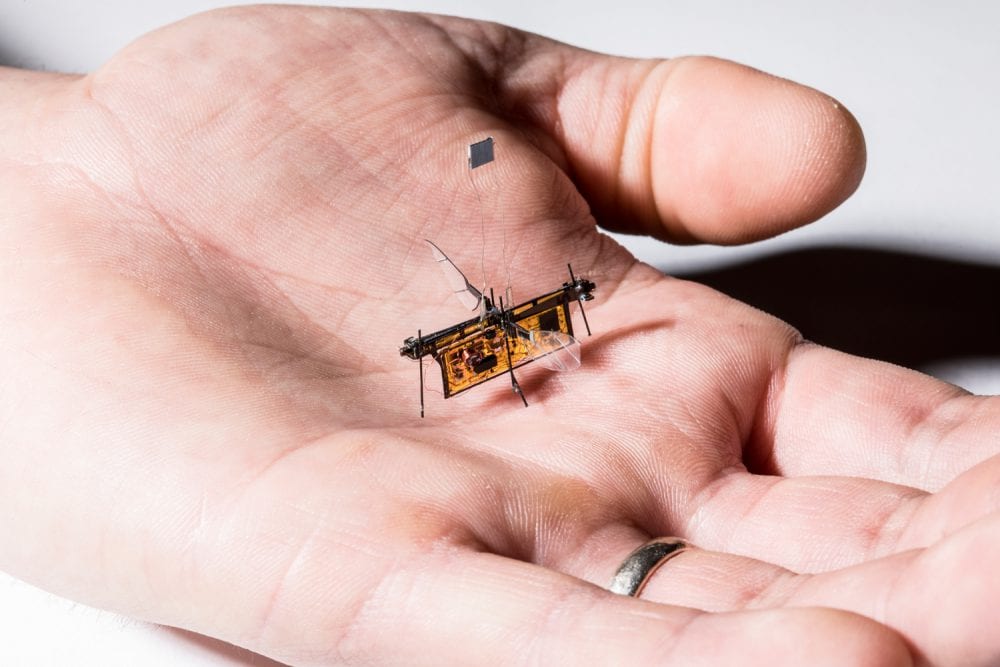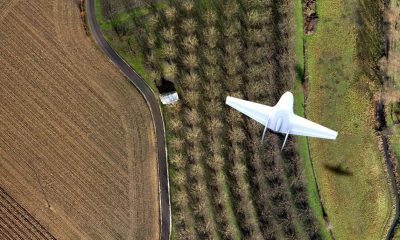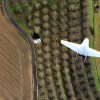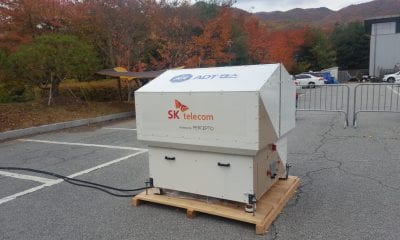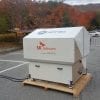Meet RoboFly – A Wireless Flying Robotic Insect
Engineers at the University of Washington have developed a flying robot drone no bigger than an insect. The wireless controlled device called ‘RoboFly’ weighs slightly more than a toothpick and is powered by a laser beam; a miniscule on-board circuit converts laser energy into enough electricity to operate its wings.
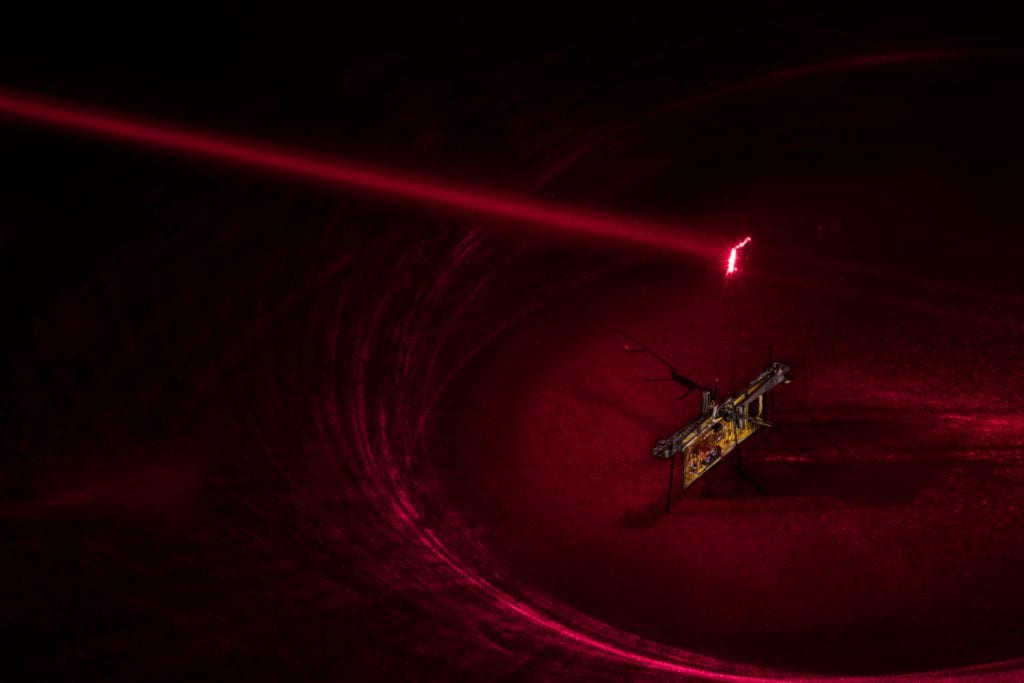
To power RoboFly, the engineers pointed an invisible laser beam (shown here in red laser) at a photovoltaic cell, which is attached above the robot and converts the laser light into electricity.Mark Stone/University of Washington
The team suggest that their insect-sized flying robots could be useful with time-consuming tasks such as surveying crop growth on large farms or possibly detecting gas leaks. RoboFly is too small to use propellers, but is able to soar by fluttering tiny wings. Its small size is advantageous in many respects, particularly as these robots are cheap to make and can easily be used in small, tight spots that are inaccessible to larger drones.

The University of Washington engineers who created RoboFly check out their new tiny wireless flying robot. Back row (left to right): Yogesh Chukewad, Sawyer Fuller, Shyam Gollakota; Front row: Vikram Iyer, Johannes James.Mark Stone/University of Washington
Until now ‘flying robo-insects’ have remained tethered to the ground as the electronics needed to power and control their wings were too heavy for these miniature robots to carry. Now, the engineers at the University of Washington have cut the cord and added a brain, allowing their RoboFly to take its first independent flaps; they say while ‘this might be one small flap for a robot, but it’s one giant leap for robot-kind’.
The team will present its findings May 23 at the International Conference on Robotics and Automation in Brisbane, Australia. Co-author Sawyer Fuller, an assistant professor in the UW Department of Mechanical Engineering, says before now, the concept of wireless insect-sized flying robots remained the realm of science fiction, and the question was ‘would we ever be able to make them work without needing a wire?’ Fuller, says their new wireless RoboFly shows they’re now much closer to reality.
The challenge for the engineering team was the wing flapping – a power-hungry process, and both the power source and the controller that directs the wings are too big and bulky to ride aboard a tiny robot; so Fuller’s previous robo-insect, the RoboBee, had a leash—it received power and control through wires from the ground.
However a flying robot needs to be able to operate on its own and this led Fuller and the team to decide to use a narrow invisible laser beam to power their robot. This laser beam was directed at a photovoltaic cell, attached above RoboFly, which converts the laser light into electricity. Co-author Shyam Gollakota, an associate professor in the UW’s Paul G. Allen School of Computer Science & Engineering says it was the most efficient way to quickly transmit enough power to RoboFly without adding much weight. However as the laser alone did not provide enough voltage to move the wings, the team designed a circuit that boosted the seven volts coming out of the photovoltaic cell up to the 240 volts needed for flight.
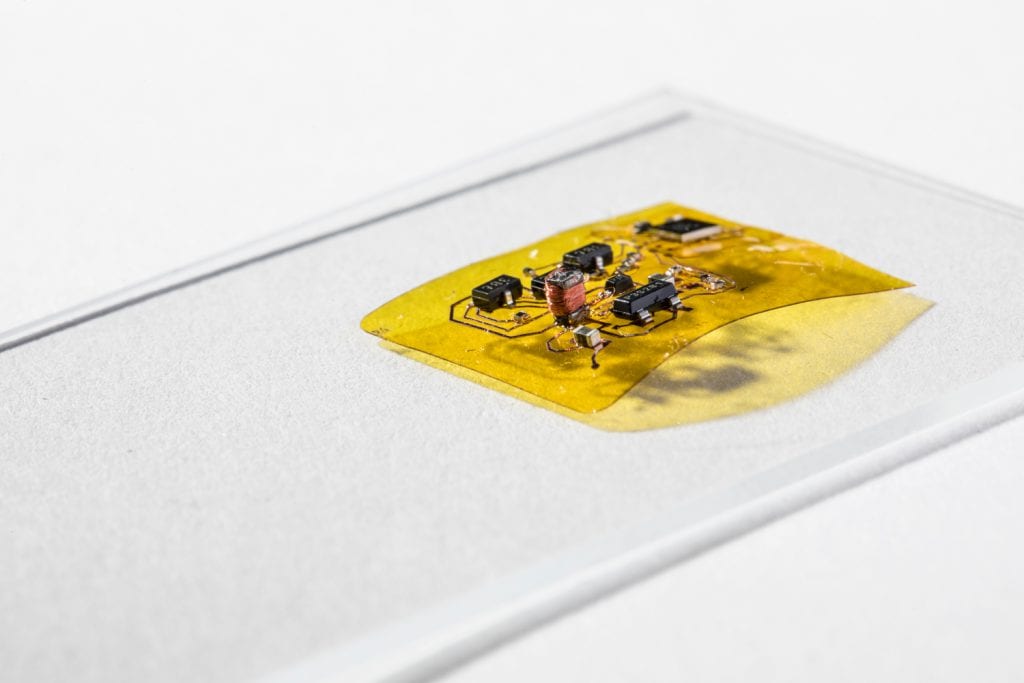
To make RoboFly wireless, the engineers designed a flexible circuit (yellow) with a boost converter (copper coil and black boxes at left) that boosts the seven volts coming from the photovoltaic cell into the 240 volts needed for flight. This circuit also has a microcontroller brain (black square box in the top right) that lets RoboFly control its wings.Mark Stone/University of Washington
In order to give RoboFly control over its own wings, the engineers provided a brain by adding a microcontroller to the same circuit. Co-author Vikram Iyer, a doctoral student in the UW Department of Electrical Engineering says the microcontroller acts like a real fly’s brain telling wing muscles when to fire; it gives RoboFly, the wing instructions such as ‘flap hard now’ or ‘don’t flap’; the controller sends voltage in waves to mimic the fluttering of a real insect’s wings.
Johannes James, the lead author and a mechanical engineering doctoral student, says it uses pulses to shape the wave, and to make the wings flap forward swiftly, it sends a series of pulses in rapid succession and then slows the pulsing down as you get near the top of the wave, then it does this in reverse to make the wings flap smoothly in the other direction.
In order to create the RoboFly wireless, the engineers designed a flexible circuit (yellow) with a boost converter (copper coil and black boxes at left) that boosts the seven volts coming from the photovoltaic cell into the 240 volts needed for power.
Currently RoboFly is only able to take off and land and once its photovoltaic cell is out of the direct line of sight of the laser, the robot runs out of power and lands. But the team are optimistic that they will soon be able to steer the laser so that RoboFly can hover and fly around. They believe that while RoboFly is currently powered by a laser beam, future versions could use tiny batteries or harvest energy from radio frequency signals. Gollakota says that way, their power source can be modified for specific tasks.
Sawyer Fuller says future RoboFlies could have more advanced brains and sensor systems that help the robots navigate and complete tasks on their own. He would really like to make one that finds methane leaks, that could fly around buildings looking for plumes of gas coming out of leaky pipes. He believes if these robots can make it easy to find leaks, they will be much more likely to be patched up, which will reduce greenhouse emissions. This idea is inspired by real flies, which are really good at flying around looking for smelly things.
The team suggest this would be a good application for their RoboFly.

